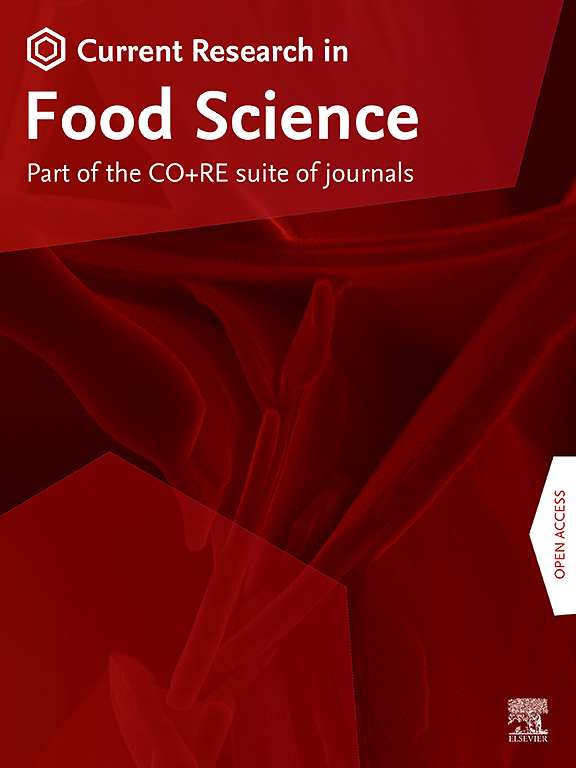用微细苹果和甘蔗渣稳定乳剂
IF 7
2区 农林科学
Q1 FOOD SCIENCE & TECHNOLOGY
引用次数: 0
摘要
微粉苹果和甘蔗渣被评价为合成乳化剂的天然和可持续替代品,用于生产水包油乳液。这项研究涉及了副产物的生物活性化合物(总酚含量、抗氧化活性、总类胡萝卜素含量)、技术功能特性(持水和持油能力)和微观结构(场发射扫描电子显微镜)的特征。然后用两种pH值(天然和酸性)的每种甘蔗渣配制四种乳剂。通过分析其乳化活性指数(EAI)、动力学稳定性和微观结构(光镜)来评价其乳化性能。甘蔗渣显示出更高水平的总酚、抗氧化活性和类胡萝卜素,而苹果甘蔗渣显示出优越的持水和持油能力。在酸性pH条件下,用甘蔗渣稳定的乳剂表现出最高的EAI和动力学稳定性,且脂肪球最小、最均匀。这些发现强调了pH值和副产物类型对乳液性能的显著影响。这项研究的主要新颖之处在于,它展示了微粉原料甘蔗渣作为一种清洁标签、可持续的乳液稳定成分的潜力,消除了对添加乳化剂的需求,并支持了食品工业的创新。本文章由计算机程序翻译,如有差异,请以英文原文为准。

Use of micronised apple and mandarin bagasse for emulsion stabilisation
Micronised apple and mandarin bagasse were evaluated as natural and sustainable alternatives to synthetic emulsifiers for oil-in-water emulsion production. The study involved the characterisation of both by-products in terms of their bioactive compounds (total phenolic content, antioxidant activity, total carotenoid content) techno-functional properties (water-holding and oil-holding capacity) and microstructure (Field Emission Scanning Electron Microscopy). Four emulsions were then formulated using each type of bagasse at two pH levels (native and acidic). The emulsifying activity index (EAI), kinetic stability, and microstructure (Light Microscopy) were analysed to assess their emulsifying performance. Mandarin bagasse showed higher levels of total phenolics, antioxidant activity, and carotenoids, and apple bagasse demonstrated superior water- and oil-holding capacities. Regarding the emulsions, those stabilised with mandarin bagasse at acidic pH showed the highest EAI and kinetic stability, as well as the smallest and most homogeneous fat globules. These findings underscore the significant influence of pH and by-product type on emulsion performance. The main novelty of this study lies in demonstrating the potential of micronised raw mandarin bagasse as a clean-label, sustainable ingredient for emulsion stabilization, eliminating the need for added emulsifiers and supporting innovation in the food industry.
求助全文
通过发布文献求助,成功后即可免费获取论文全文。
去求助
来源期刊

Current Research in Food Science
Agricultural and Biological Sciences-Food Science
CiteScore
7.40
自引率
3.20%
发文量
232
审稿时长
84 days
期刊介绍:
Current Research in Food Science is an international peer-reviewed journal dedicated to advancing the breadth of knowledge in the field of food science. It serves as a platform for publishing original research articles and short communications that encompass a wide array of topics, including food chemistry, physics, microbiology, nutrition, nutraceuticals, process and package engineering, materials science, food sustainability, and food security. By covering these diverse areas, the journal aims to provide a comprehensive source of the latest scientific findings and technological advancements that are shaping the future of the food industry. The journal's scope is designed to address the multidisciplinary nature of food science, reflecting its commitment to promoting innovation and ensuring the safety and quality of the food supply.
 求助内容:
求助内容: 应助结果提醒方式:
应助结果提醒方式:


